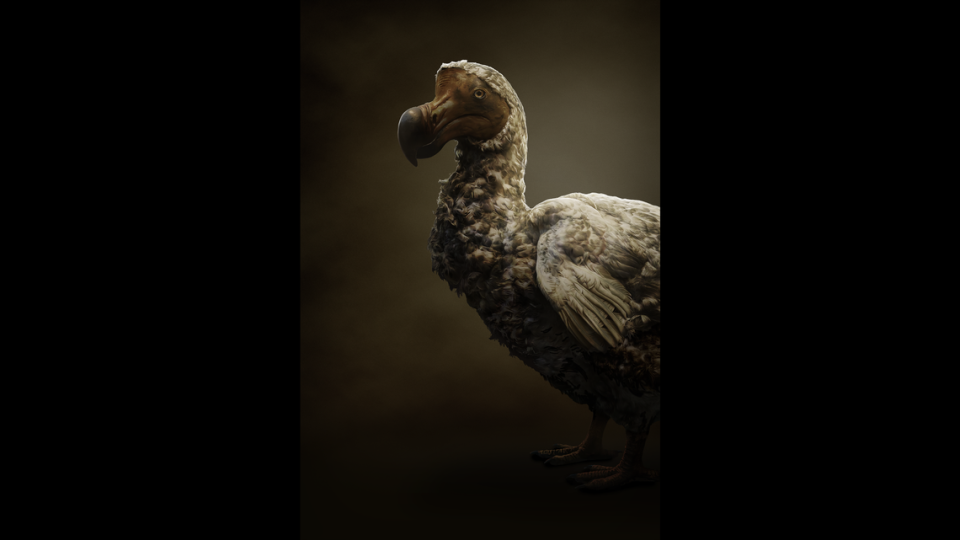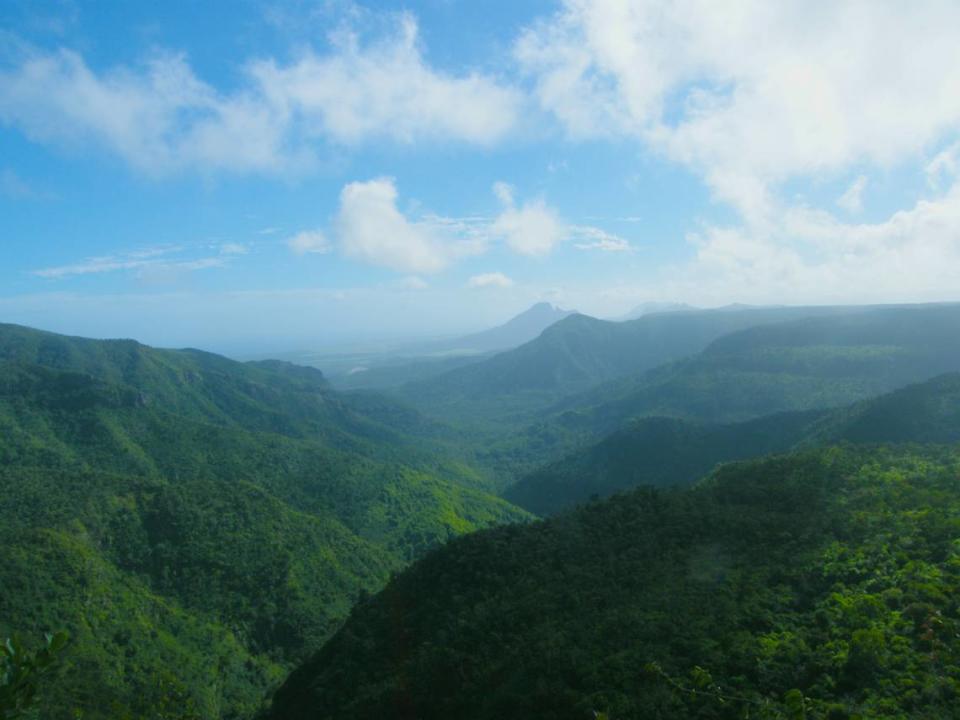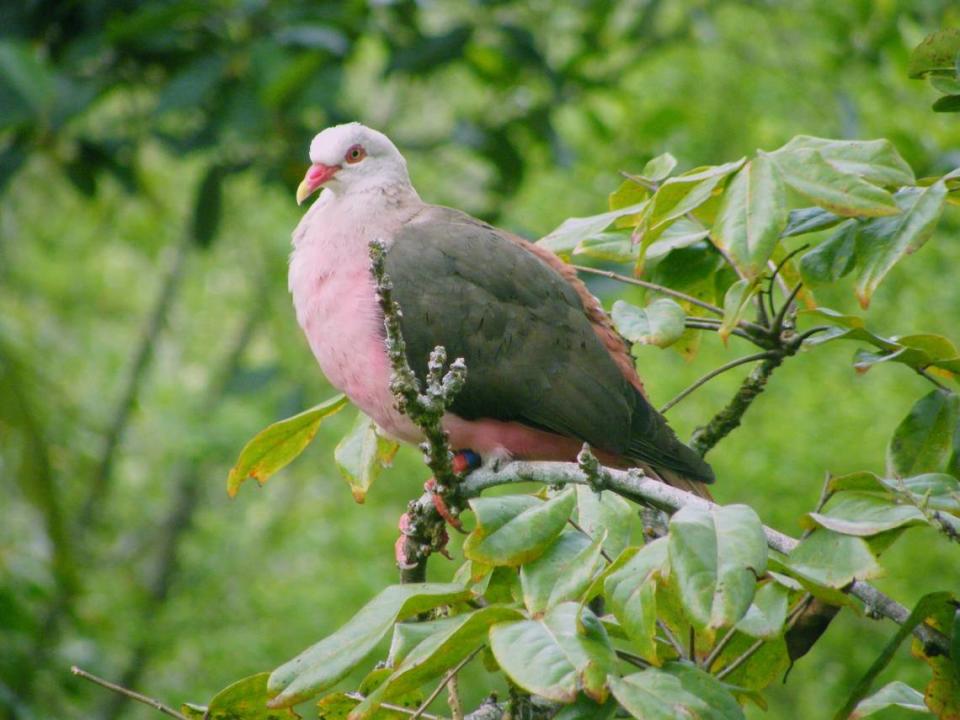The Texas company reviving the extinct woolly mammoth adds the dodo to its to-do list
Remember the organization that in 2021 announced it was going to bring the woolly mammoth back from extinction? Its leaders are building a to-do list of species they hope to revive, and some of them aren’t even fully extinct yet.
Colossal Biosciences, the Texas-based company using genetic science to revive the woolly mammoth, announced Tuesday it will also bring the dodo back. The organization is partnering with the Mauritian Wildlife Foundation to reintroduce the flightless birds to the wild.
The company currently expects the first woolly mammoth calves to be born sometime in 2028, and thinks the dodo bird will be reintroduced to its once-native habitat even before that.
A big, hairy elephant and a flightless bird whose name has become synonymous with stupidity may not sound as exciting as giant lizard predators grown from DNA extracted from a mosquito in amber (which Colossal CEO and co-founder Ben Lamm assured the Star-Telegram would be impossible with today’s technology anyway), but being thrilling in that sense isn’t the goal for the brains behind the company.
They believe the animals could have positive impacts on the ecosystems they used to call home and even improve lives and ecosystems across the globe.
This isn’t ‘Jurassic Park’
Lamm and Matt James, Colossal’s chief animal officer, told the Star-Telegram they’ve heard the Jurassic Park jokes plenty of times — not that it’ll stop us from making a few more — but that their end goals couldn’t be further from that.
“I don’t think that their focus was reintroducing these things,” Lamm said.
Steven Spielberg’s blockbuster movies (the first of which lives on as a rare example of a movie being better than the book) did do a lot of good by inspiring generations of genetic scientists and introducing the idea to public discourse, but it didn’t do as much to explore realistic, practical applications, Lamm said.
If Colossal is successful in bringing these animals back, ecotourism could eventually help fund conservation efforts after they “rewild” them.
But that’s not Colossal’s ultimate goal. There’s no intention of putting the mammoths in enclosures and asking the masses to pay to see them with the adrenaline high-inducing possibility that they could break free and go on a rampage while you ride around helplessly in an automated SUV painted in the ugliest and most blinding shades of yellow and lime green.
Colossal believes the most useful, practical applications for gene sequencing and reviving extinct animals will be to mend damaged ecosystems, slow or even reverse climate change, and develop technology to save endangered species.
How ‘deextinct’ animals can combat climate change
The woolly mammoth and dodo were “keystone” species, Lamm and James said.
The mammoth’s feeding habits and migration patterns cleared arctic environments of ice and prevented the growth of too many trees that today hinder the growth of grasslands. The feeding habits of the dodo, a bird extinct since the late 1600s believed to have about the same intelligence as a pigeon, kept the flora of the Mauritius island, about 500 miles east of Madagascar, in check.

For both the mammoth and dodo, the animals’ extinctions came about in large part due to human intervention, James said. Now, James believes Colossal has the technology to make them “deextinct.”
For mammoths, close relatives to Asian elephants that could stand up to 12 feet tall and weigh as much as eight tons, evidence in archaeology and paleontology suggest humans over-hunted the animals until they were no more. While scientists do have ideas as to how the mammoths went extinct, there is (unfortunately) no evidence that there was ever one named Manny, nor that mammoths were ever friends with sloths, much less saber-tooth tigers.
What does seem apparent is that their extinction led in part to the disappearance of the mammoth steppe that stretched during the last glacial maximum from North America, across Eurasia and into parts of modern-day China.
The dodo’s extinction was brought about in large part by the introduction of cats and rats as invasive species that raided the birds’ nests and saw the Mauritius biosphere destabilized.
“The loss of a keystone species in their environment leads to degraded environments, can lead to eco degradation and loss of methane segregation but can also lead to loss of food security,” Lamm said.
The methane segregation is one of the most important points for Colossal. As climate change melts the polar ice caps, it could trigger the release of methane and other greenhouse gasses trapped there since the tundras were formed. The release of those gasses would accelerate harmful climate change, possibly irreversibly. By cloning the woolly mammoth and returning it to the arctic, Colossal hopes to prevent that from happening.
No, not that kind of cloning
This won’t look like the pop culture ideas of cloning. Colossal won’t be growing woolly mammoths or dodo birds from beginning to end in tubes in its labs, much less galactic armies with the secret purpose of destroying an ancient order of warrior monks wielding magical powers and swords of light.
Colossal’s work isn’t like what we’ve seen in Star Wars or the massively underrated 2005 sci-fi thriller “The Island,” starring Ewan McGregor. Primarily because the company isn’t cloning humans, but also because it won’t be done entirely with lab equipment and vats or tubes.
In the simplest terms, Lamm says the company will use the genetic codes of these animals for artificial insemination. In the woolly mammoth, Asian elephants will be used as surrogates to give birth to mammoth calves. According to research from Colossal, their DNA is already more than 99% similar.
Recreating the dodo bird is a little more complicated. The gene editing will have to be done using primordial germs, a sort of reproductive precursor to the sperm and egg. The reconstructed dodo genes will be introduced to sterile chickens, who will then be able to mate and lay dodo eggs in the spring. It’s something that hasn’t been explored as much as gene-editing or “cloning” with mammals, Lamm said, so an exact timeline may be difficult to come by.
How quickly the world could see impacts
The reintroduction of the woolly mammoth could take a little while to create significant impacts in the world, James said. A 22-month gestation period and work that will be necessary to make ecosystems ready for them will slow things down, and then time has to be allowed for the giants to do their work.
The goal right now is to deliver the woolly mammoth calves by 2028, Lamm said. Some local impacts should be noticeable fairly quickly, but global effects to climate change could take longer.
“That could take another two months, another 12 months,” Lamm said. “It’s hard to put a timeline on the dodo.”
In the case of the dodo, gestation should be much faster and so should the positive impacts on their ecosystem.
In both cases, the animals will be brought back from extinction by combining the DNA of their closest living ancestors to fill gaps and then artificially inseminating those closest relatives to, in the case of the mammoth give birth and in the case of the dodo lay eggs. Because gene-editing with the purpose of cloning hasn’t been as widely experimented with avian species, Lamm said, an exact timeline for successful insemination is hard to define.
Because the dodo won’t take as long to bring back after insemination, the biggest challenge could be in preparing their ecosystem. Lamm said that process, as part of the partnership with the Mauritian Wildlife Foundation, can start right away.
They can clear the unnatural predators (primarily cats and rats) from the ecosystem and do their best to restore some semblance of balance to the island of lush, green mountain landscapes. That way, when the dodos are ready to be reintroduced to the wild, their home will be hospitable enough for them to do the rest of the work themselves.

Lamm says the responsible use of genetic technology could even prevent a sixth mass extinction, currently projected to go into full swing sometime around 2050 but already in progress today.
What about harmful consequences?
Lamm and James said they are working to predict and prevent any negative impacts from the reintroduction of these keystone species to their once-native environments and are confident they, along with the ecologists, conservationists and local governments with which they’re working, can counter any harm that may come from it.
Right now, James says, the potential benefits far outweigh the risks of continued climate change.
Because these animals are being reintroduced to ecosystems in which they used to be native, the risk of them acting as invasive species or causing harm is unlikely. But even if the populations grow to a level that they become concerning, James said he’ll consider that a victory.
“I think if we get to the point where we were afraid of them encroaching on other ecosystems or being poached, that means we’ve done such a good job that we’ve reached the point where we have to worry about controlling them,” James said.
It’ll be far easier to control the large birds and giant, hairy, arctic weather elephants than it is to try restoring balance and biodiversity to ecosystems without them, the scientists say. The natural spread of the dodo away from the island to which they’re native is virtually impossible since they can’t fly.
And the same things that keep elephants from encroaching on environments not their own will keep the mammoths in their lane, primarily habitability of the local climate and ecology, James said. They’re also not like most invasive species, which can because of their size go largely unnoticed until they’ve already invaded.
When it comes to potential poaching, James said, working with local governments and conservation organizations will allow them to combat any threats.
Not just reviving extinct species
The northern white rhino is, in all practicality, already gone. In scientific terms, it is “functionally extinct” because the only two of the species left in the world are both female, and only one is of an age that it can act as a surrogate or have its eggs harvested for artificial insemination.
In the case of the northern white rhino, James said, the same work Colossal is doing to reverse extinction can be used to prevent it. He and Lamm said Colossal’s experiments with the woolly mammoth and dodo have led to the creation of technology that might be able to pull the northern white rhino back from the brink.
Understanding the genetics of northern white rhinos, Colossal can artifically inseminate the last viable female of the species not just to give birth to the species’ saviors, but also introduce enough genetic diversity into her offspring to prevent inbreeding and other complications.
It can also be used to aid in efforts to save the Tasmanian devil on Tasmania. The critters have seen genetic faults lead to a contagious facial tumor that threatens the existence of the species, James said.
But genetic technology could hold answers there, too. While scientists are working to develop and eventually deploy vaccines (one was approved for testing this year, according to Nature Journal) to the wild population, Colossal’s genetic sequencing could offer solutions to create and introduce genetic resistance or immunity to the cancer.
And the partnership with The Mauritian Wildlife Foundation also comes with combined efforts to “genetically rescue” the endangered pink pigeon, according to Colossal. There are about 500 pink pigeons left in Mauritius, and genetic diversity threatens their survival. The organizations will work together to identify the genetic diversity lost using historic samples, then use Colossal’s gene-editing tech to reintroduce that diversity.

No matter the species, James said it’s imperative to start now.
“The cost and risk for inaction is much less than the risk of us doing these things now,” James said. “We already have a long list of species that need to be protected and regrown.”

